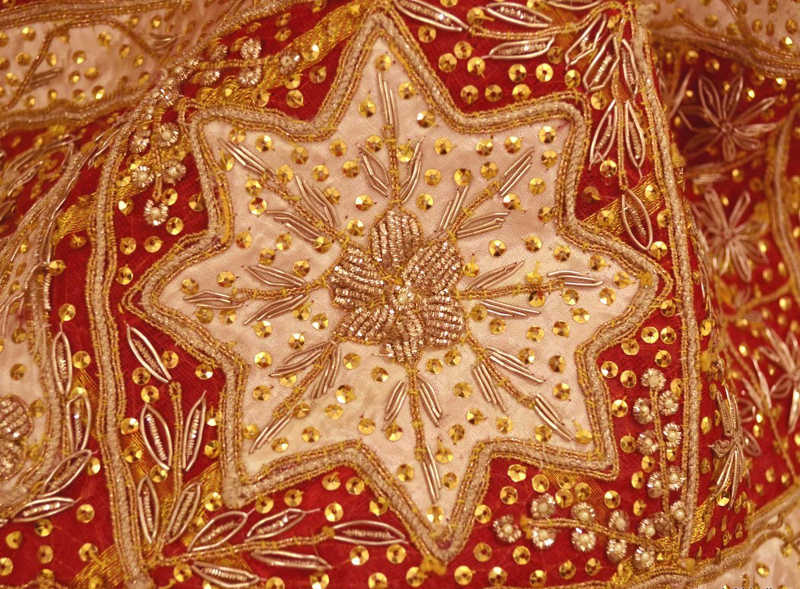===
1449,
7
===

=== |
 |
garm : 'Hot, warm; in a state of heat; burning; glowing: fervid; ardent, zealous, fervent; excited; eager, intent on; fiery, choleric, virulent'. (Platts p.904)
jalvah : 'Manifestation, publicity, conspicuousness; splendour, lustre, effulgence'. (Platts p.387)
to : 'conj. (correl. to agar ,jo ,jab ) & adv. Therefore, then, in that case; at any rate, at least; at that time; moreover; that; also; for; —yes, well! —(as a particle of asseveration or emphasis) indeed, actually, in point of fact; forsooth; just'. (Platts p.341)
rivāq : 'A tent or canopy supported on one pole in the middle thereof; a curtain stretched like a canopy before a tent or the door of a house; a roof in the front of a tent or a house, a portico, porch; a gallery in front of a house; a lofty building resting on columns'. (Platts p.602)
FWP:
SETS == EK
MOTIFS
NAMES
TERMS == 'THOUGHT-BINDING'SRF singles out for praise the little word to in the second line, but doesn't explain the nature of its excellence. This isn't surprising, because even in Urdu its range of colloquial effects can be hard to describe. It of course has a formal grammatical use as equivalent to tab , so that it is used as part of 'when-then' [jab-tab] constructions (standing in for tab ), and 'if-then' [agar-to] constructions as well. But from there, no doubt partly by extension, it goes careening off into colloquial speech and often acts as the kind of interjection that I always want to call a 'sentence re-balancer'. Just take a look at Platts's definition, given above-- 'therefore, then, in that case; at any rate, at least; at that time; moreover; that; also; for; —yes, well! — ... indeed, actually, in point of fact; forsooth; just' are all part of the range of its uses.
In the present verse, I've translated to as 'no doubt', because it seems to me that it's establishing a kind of explanatory probability. While koʾī māh-pārah hai would be a flat assertion of fact ('there is some moon-fragment'), koʾī to māh-pārah hai conveys in context a feeling of deduction ('there is, then, some moon-fragment' is only a literal rendering). Even though the first line doesn't present itself as a logical premise, the to gives us the feeling that it's being used as one. The information in the first line leads the speaker to the conclusion in the second line. But what information? Is it the uniqueness (established by ek ), or the heat, or the radiance, or the celestial dwelling, or the eager daily and day-long omni-vision, that so evokes the beloved? As befits a brilliant and garm-e jalvah poet, Mir leaves us to decide for ourselves.
Note for translation fans: It's intriguing that to shares so much with 'then' in English, which has a similarly formal grammatical use ('when-then', 'if-then') that also extends much farther into colloquial registers. Consider 'Come along, then', or 'Now then, behave yourself!', or 'But then, he does his best', or 'So then, is that all?'. I often try to reflect this in translation, with only limited success. Similarly, consider the colloquial (sentence-rebalancing) similarities of so to 'so', and ḳhair to 'well'. By contrast, beyond 'even/also', bhī goes off in directions that have no English counterparts; and hī has no real English equivalent at all.